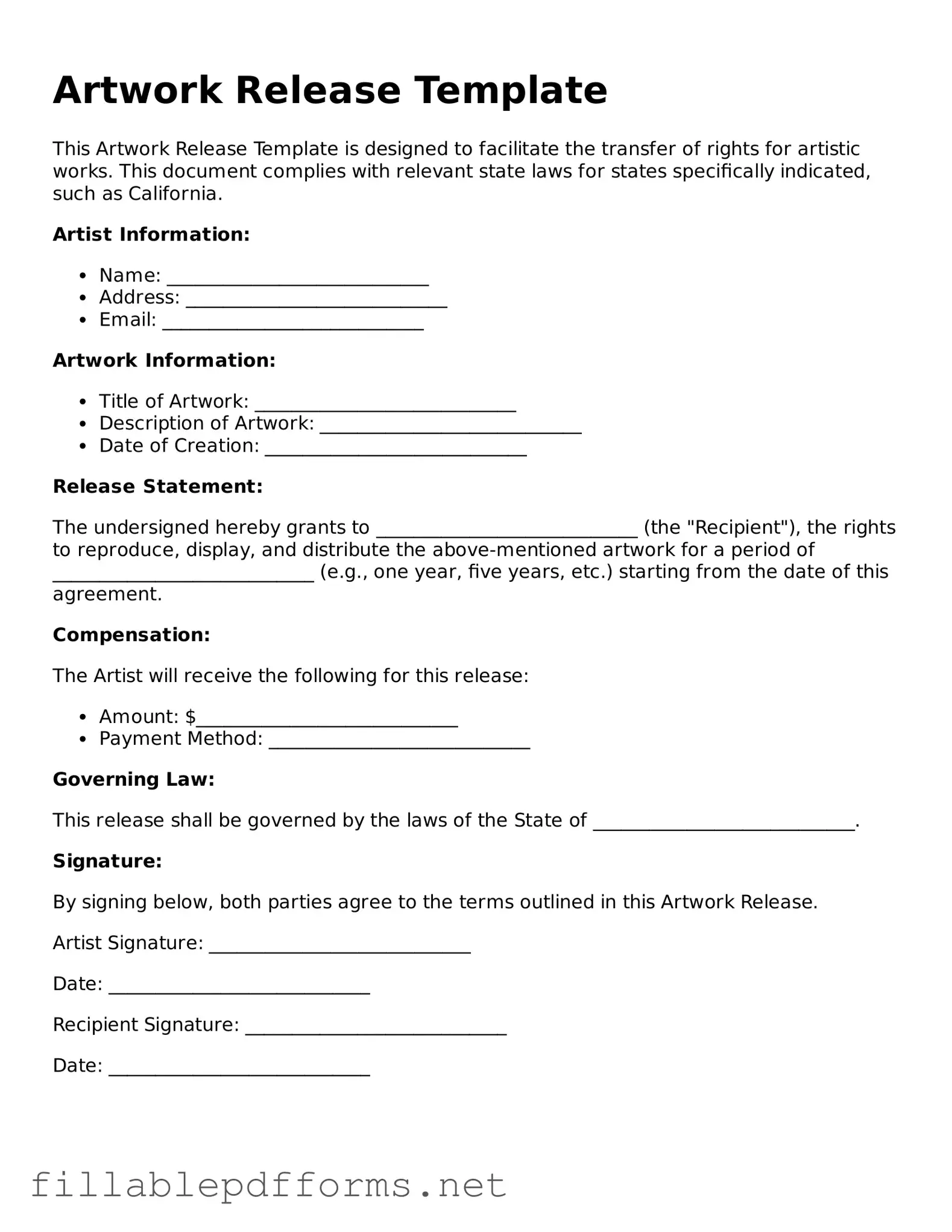The Artwork Release form plays a crucial role in the relationship between artists and those who wish to use their work, whether for commercial purposes, exhibitions, or other public displays. This form serves as a legal agreement that grants permission to reproduce, distribute, or display an artist's creations, ensuring that the artist's rights are respected while also allowing for the promotion and appreciation of their work. Typically, the form outlines key details such as the specific artwork being released, the scope of use, and any compensation involved. Additionally, it often addresses copyright issues, clarifying who retains ownership of the artwork and under what circumstances the artist can revoke the permission granted. By signing this form, both parties establish a clear understanding of their rights and responsibilities, fostering a respectful and professional relationship that benefits everyone involved. Understanding the nuances of the Artwork Release form is essential for artists, organizations, and individuals alike, as it helps to navigate the complex landscape of intellectual property in the creative world.
